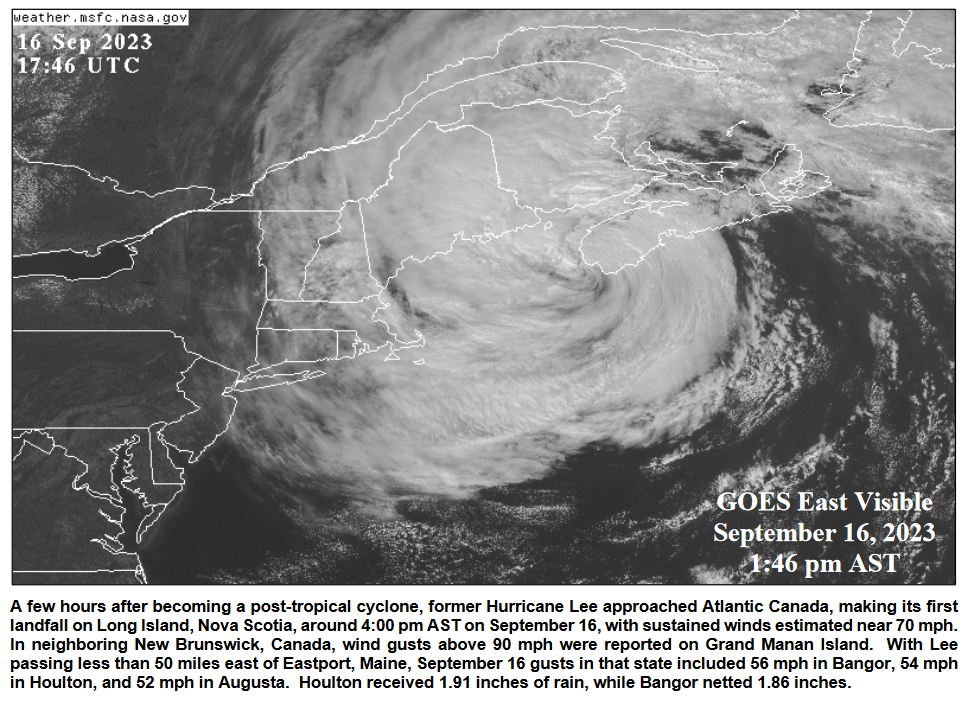This article is based primarily on the September 19, 2023, USDA Crop Bulletin which covers the week ending September 17, 2023. The USDA report usually becomes available on Tuesdays but I was not able to publish it last night but I did so this evening. The full USDA Crop Bulletin can be accessed HERE
It again seems like an average crop. We are starting to have Production information as well as Progress Reports and this information is included in the article.
The article includes a short international review of agricultural conditions which are generally favorable. I also included U.S. crop-related weather forecasts.
We begin by taking a look at what finally was the impact of former Hurricane Lee
No on to the National Agriculture Summary. The Tables below the summary have additional data. The boxes with my comments may be incomplete so for crops of interest check the data out yourself to be sure.
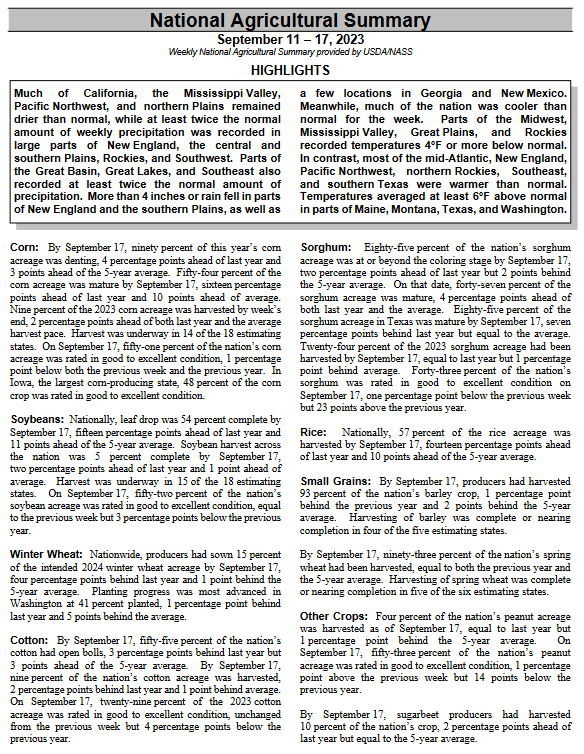
| Below is pretty much the same information in table format. However, there is additional information in these tables. |
–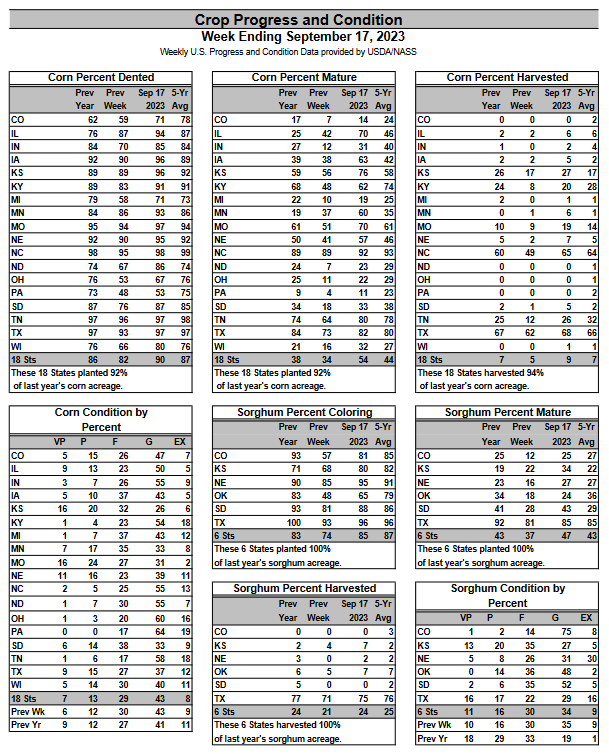
| The condition of corn seems to have recovered from earlier this year to now be equal to last year which is amazing. Sorghum is in line with its 5-Yr average with the crop condition much improved over last year |
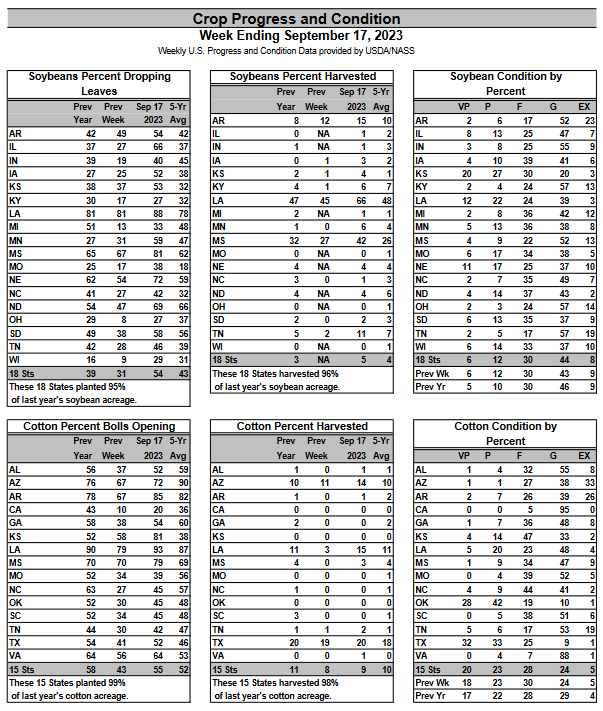
| Soybeans are performing at their five-year average. Elsewhere in this report, it seems to show that the number of acres planted and certainly the acres harvested is less than last year. Cotton is now in line with the five-year average. Elsewhere in this report there is more information on cotton which shows the situation is complex. |
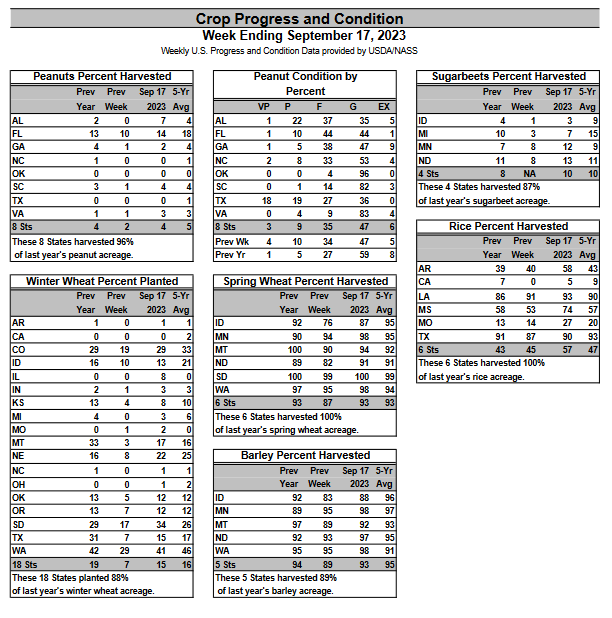
| Peanut conditions continued to lag last year. Spring wheat is in line with the five-year average. Barley has caught up with its five-year average. Rice is looking very good. The harvesting of sugarbeets has just started. The planting of winter wheat is slower than last year but in line with their 5-Yr average. |
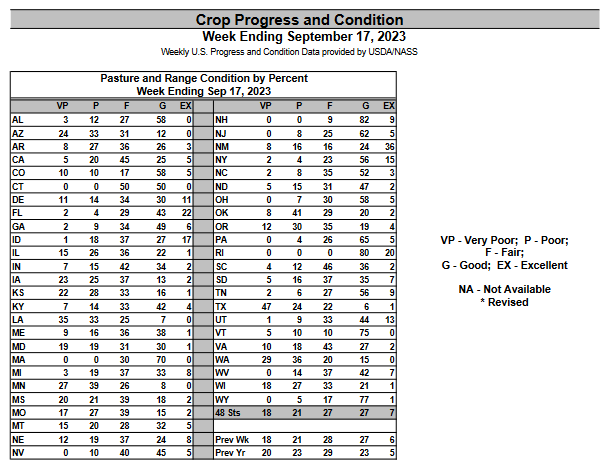
| The pasture conditions are better than last year but not dramatically. |
Some additional detail is provided HEREIt is mostly some additional weeks of data and it is all in larger print. |
Let us take a look at the weather forecasts.
| 6
– 10
|
|
|
| 8
– 14 |
|
|
| 3
– 4 |
|
|
HAZARDS OUTLOOKS
Here is the latest Day 3 -7 and Day 8 – 14 hazards forecasts which update only on weekdays. I think it supplements the standard weather forecast.
| You can track the situation daily by accessing our Daily Weather forecast which you can access HERE. But the weather outlook maps in this article also update. Of interest are the areas of excessive heat. |
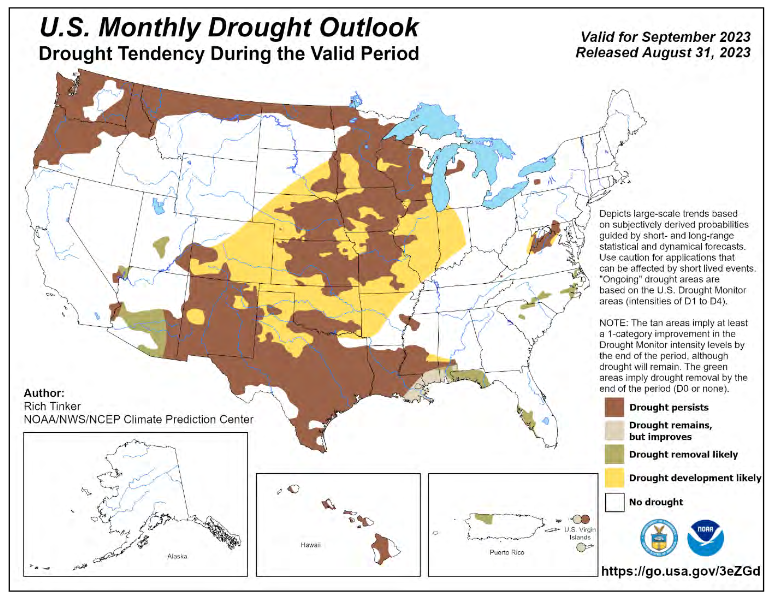
| This is the NOAA Drought Outlook for September but it does not seem to agree with the precipitation outlooks we show earlier. So it may turn out to be a bit pessimistic. |
Looking at the month-to-date precipitation

| You can see the wet and dry areas. The first 20 days of September were pretty dry in the major growing areas other than parts of California. |
The NASS Report of the Week. This week we provided the latest Production Report.
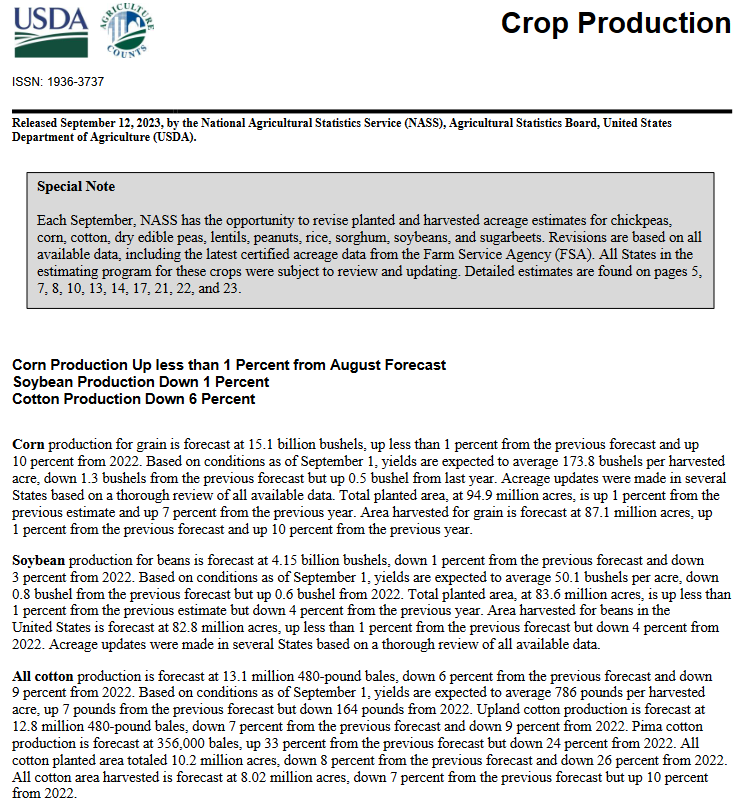

| Crop Production is different than Crop Progress since it forecasts the final number whereas the Crop Progress is the current status of crops. The full report can be accessed HERE. Cotton is not looking good.
A version with many interesting graphics can be accessed HERE. I used to publish that monthly report but there was not sufficient interest to justify the effort but I am providing the link. It comes out at the same time as the Crop Production Report and contains a lot more information. It is worth reading for those who are very interested in crops. |
International
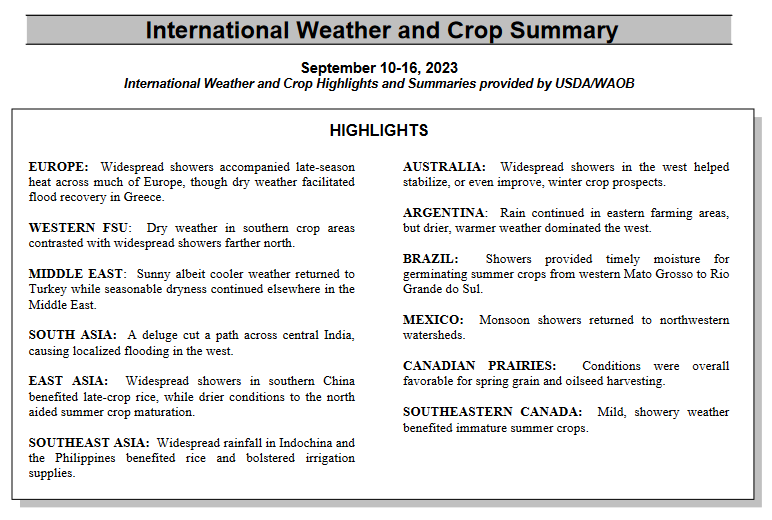
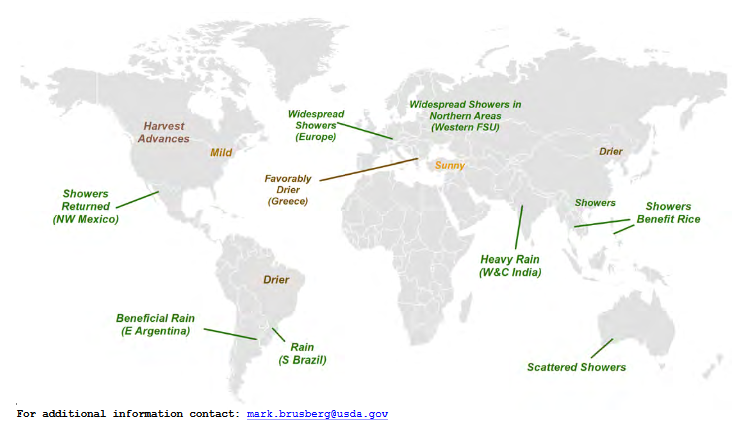
| The above is the map that was provided this week. |
| I am showing Mexico because it informs us of the progress of the Sonoran Monsoon. It still is providing moisture to CONUS but seems to be coming to the end of its direct influence but is still involved in the tropical cyclone season. |
Sources of Information
Weekly Updates can be found HERE
and perhaps more directly HERE
Additional Useful Sources of Information
WASDE: World Agricultural Supply and Demand Estimates HERE
NASS Report Schedule HERE
Executive Briefings HERE
Economics and Prices HERE
Office of the Chief Economist HERE.
Drought information by crop HERE
–
| I hope you found this article interesting and useful. |

